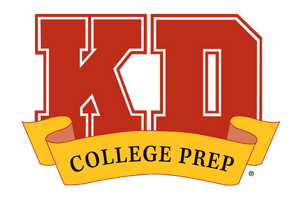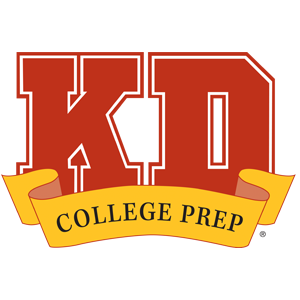On Feb. 5, 2024, Dartmouth College announced that it would return to requiring SAT® or ACT® test scores for college admission, basing its decision off the research by a faculty committee. In the weeks to follow, Yale, Brown, Purdue, UT-Austin, and others announced that they would also shift to test-required policies for the upcoming application season.
These colleges are not the first to shift back to requiring test scores after the pandemic. Georgetown, MIT, Georgia Tech, and others shifted to test-required admissions last year. However, with the decision coming from three Ivy League institutions and a prominent public university, it indicates that students can expect more colleges to follow suit.
“The recent announcements about changes in college admissions testing requirements, both pro and con, were somewhat expected, although the specific schools may have surprised some people… High school students just need to expect a changing admission landscape and be prepared to be the strongest candidate possible,” said David Dillard, CEO of KD College Prep.
While the majority of colleges remain test optional, families currently navigating the college admissions process may find the process more confusing and overwhelming than in previous years. In this article, we explain what these changes mean for students, which colleges have returned to requiring test scores, and provide some advice for families moving forward.
Navigate through this article:
Which Colleges Require Test Scores?
Below we provide a list of colleges that require SAT or ACT scores foreseeable future. Click on a tab to view testing policies with links to sources, recommended score ranges for the tests, and acceptance rates to evaluate your student’s admissions odds.
So far, the following colleges have adapted to test-required admissions for the upcoming application cycles:
- Adelphi University
- Albion College
- Brown University
- California Institute of Technology
- College of the Ozarks
- Central Michigan University
- Dartmouth College
- Florida A&M University
- Florida Atlantic University
- Florida College
- Florida Institute of Technology
- Florida International University
- Florida Gulf Coast University
- Florida Polytechnic University
- Florida State University
- Gannon University
- Geneva College
- Georgia College & State University
- Gallaudet University
- Georgetown University
- Georgia Institute of Technology
- Harvard University
- Johns Hopkins University
- Kettering College
- Louisiana Tech University
- Luther College
- Massachusetts Institute of Technology
- Mercer University
- New College of Florida
- New Mexico Tech
- Nova Southeastern University
- Pittsburg State University
- Purdue University
- Randall University
- Samford University
- Seattle Pacific University
- Stanford University
- Tennessee Tech University
- Thomas Aquinas College
- Touro University
- United States Air Force Academy
- United States Military Academy
- United States Merchant Marine Academy
- United States Naval Academy
- University of Arkansas
- University of Central Florida
- University of Dallas
- University of Detroit Mercy
- University of Florida
- University of Georgia
- University of Hawaii at Manoa
- University of Idaho
- University of Louisville
- University of Memphis
- University of North Florida
- University of South Dakota
- University of South Florida
- University of Texas at Austin
- University of West Florida
- University of Wyoming
- Utah State University
- University of Tennessee at Chattanooga
- University of Tennessee, Knoxville
- Valparaiso University
- Vaughn College of Aeronautics and Technology
- Wayne State University
- West Chester University
- Wilkes University
- Yale University
Below are recommended SAT score ranges for the colleges that require test scores. KD bases recommended ranges off scores found in the 25th to 75th of admitted freshman (sometimes called the “Middle 50”), as reported by the college in its most recent Common Data Set report. Please note that some colleges have opted to not release this information in recent years.
- Adelphi University: 1080-1310
- Albion College: Not Available
- Brown University: 1540-1560
- California Institute of Technology: Not Available
- College of the Ozarks: 1010-1213
- Central Michigan University: 1090-1200
- Dartmouth College: 1440-1560
- Florida A&M University: 1090-1150
- Florida Atlantic University: 1110-1210
- Florida College: Not Available
- Florida Institute of Technology: 1210-1310
- Florida International University: 1150-1240
- Florida Gulf Coast University: 1110-1200
- Florida Polytechnic University: 1320-1370
- Florida State University: 1320-1380
- Gannon University: 990-1250
- Geneva College: Not Available
- Georgia College & State University: 1140-1230
- Gallaudet University: 835-1057
- Georgetown University: 1410-1540
- Georgia Institute of Technology: 1440-1510
- Harvard University: 1500-1580
- Johns Hopkins University: 1530-1560
- Kettering College: Not Available
- Louisiana Tech University: 1060-1260
- Luther College: 1040-1270
- Massachusetts Institute of Technology: 1550-1570
- Mercer University: 1220-1400
- New College of Florida: 1230-1340
- New Mexico Tech: 1110-1320
- Nova Southeastern University: 1040-1310
- Pittsburg State University: Not Available
- Purdue University: 1330-1450
- Randall University: 880-1060
- Samford University: 1097-1300
- Seattle Pacific University: Not Available
- Stanford University: 1500-1560
- Tennessee Tech University: Not Available
- Thomas Aquinas College: 1180-1370
- Touro University: 430-620
- United States Air Force Academy: 1400-1470
- United States Military Academy: 1350-1430
- United States Merchant Marine Academy: 1150-1330
- United States Naval Academy: 1220-1420
- University of Arkansas: 1130-1220
- University of Central Florida: 1260-1340
- University of Dallas: 1290-1410
- University of Detroit Mercy: 1080-1210
- University of Florida: 1400-1470
- University of Georgia: 1320-1410
- University of Hawaii at Manoa: 1080-1290
- University of Idaho: 1076-1200
- University of Louisville: 1120-1220
University of Memphis: 1060-1175 - University of North Florida: 1400-1470
- University of South Dakota: 1210-1290
- University of South Florida: 1300-1370
- University of Texas at Austin: 1230-1500
- University of West Florida: 1100-1183
- University of Wyoming: 1160-1260
- Utah State University: 1100-1310
- University of Tennessee at Chattanooga: 1090-1170
- University of Tennessee, Knoxville: 1260-1340
- Valparaiso University: Not Available
- Vaughn College of Aeronautics and Technology: 836-1105
- Wayne State University: 1060-1200
- West Chester University: 1160-1250
- Wilkes University: 1040-1250
- Yale University: 1540-1560
Below are recommended ACT score ranges for the colleges that require test scores. KD bases recommended ranges off scores found in the 25th to 75th of admitted freshman (sometimes called the “Middle 50”), as reported by the college in its most recent Common Data Set report. Please note that some colleges have opted to not release this information in recent years.
- Adelphi University: Not Available
- Albion College: Not Available
- Brown University: 34-35
- California Institute of Technology: Not Available
- College of the Ozarks: Not Available
- Central Michigan University: 24-27
- Dartmouth College: Not Available
- Florida A&M University: 21.75-23.75
- Florida Atlantic University: 23-26
- Florida College: Not Available
- Florida Institute of Technology: 25-28
- Florida International University: 23-26
- Florida Gulf Coast University: 22-25
- Florida Polytechnic University: 29-30
- Florida State University: 29-31
- Gannon University: Not Available
- Geneva College: Not Available
- Georgia College & State University: 23-26
- Gallaudet University: 16-20
- Georgetown University: 32-35
- Georgia Institute of Technology: 32-34
- Harvard University: 35-36
- Johns Hopkins University: 34-35
- Kettering College: Not Available
- Louisiana Tech University: 24-27
- Luther College: 22-28
- Massachusetts Institute of Technology: 35-36
- Mercer University: Not Available
- New College of Florida: 26-31
- New Mexico Tech: 24-28
- Nova Southeastern University: Not Available
- Pittsburg State University: 18-24
- Purdue University: 31-34
- Randall University: Not Available
- Samford University: 23-29
- Seattle Pacific University: 24-27
- Stanford University: 34-35
- Tennessee Tech University: Not Available
- Thomas Aquinas College: Not Available
- Touro University: 18-25
- United States Air Force Academy: 31-33
- United States Military Academy: 30-33
- United States Merchant Marine Academy: Not Available
- United States Naval Academy: 29-33
- University of Arkansas: 24-28
- University of Central Florida: 26-29
- University of Dallas: 28-32
- University of Detroit Mercy: 23-26
- University of Florida: 31-33
- University of Georgia: 30-32
- University of Hawaii at Manoa: Not Available
- University of Idaho: 25-29
- University of Louisville: 23-27
- University of Memphis: 20-24
- University of North Florida: 31-33
- University of South Dakota: 22-25
- University of South Florida: 29-30
- University of Texas at Austin: Not Available
- University of West Florida: 23-26
- University of Wyoming: 24-27
- Utah State University: 21-27
- University of Tennessee at Chattanooga: 22-25
- University of Tennessee, Knoxville: 28-31
- Valparaiso University: Not Available
- Vaughn College of Aeronautics and Technology: 25-26
- Wayne State University: 24-27
- West Chester University: 26-30
- Wilkes University: Not Available
- Yale University: 33-35
Below is an overview of acceptance rates and application numbers for the 2023-2024 freshman admissions cycle.
- Adelphi University: 78% (17,135 Total Applications)
- Albion College: 83% (5,438 Total Applications)
- Brown University: 6% (51,316 Total Applications)
- California Institute of Technology: 2.70% (16,626 Total Applications)
- College of the Ozarks: 21% (2,495 Total Applications)
- Central Michigan University 91% (18,096 Total Applications)
- Dartmouth College: 6.15% (28,841 Total Applications)
- Florida A&M University 33% (22,713 Total Applications)
- Florida Atlantic University: 73.5% (27,636 Total Applications)
- Florida College: 66% (Application Total Unavailable)
- Florida Institute of Technology: 63% (13,941 Total Applications)
- Florida International University: 59% (25,034 Total Applications)
- Florida Gulf Coast University: 77% (15,657 Total Applications)
- Florida Polytechnic University: 47% (2,780 Total Applications)
- Florida State University: 25% (74,038 Total Applications)
- Gannon University: 77% (6,331 Total Applications)
- Geneva College: 81% (1,516 Total Applications)
- Georgia College & State University 88% (4,414 Total Applications)
- Gallaudet University: 59.2% (380 Total Applications)
- Georgetown University: 12.2% (26,638 Total Applications)
- Georgia Institute of Technology: 17.1% (52,377 Total Applications)
- Harvard University: 3.59% (61,221 Total Applications)
- Johns Hopkins University: 6.2% (~38,000 Total Applications)
- Kettering College: 25% (204 Total Applications)
- Louisiana Tech University: 64% (7,595 Total Applications)
- Luther College: 62% (4,108 Total Applications)
- Massachusetts Institute of Technology: 5% (33,746 Total Applications)
- Mercer University: 66% (11,058 Total Applications)
- New College of Florida: 74% (1,830 Total Applications)
- New Mexico Tech: 74% (1,220 Total Applications)
- Nova Southeastern University: 61% (16,789 Total Applications)
- Pittsburg State University: 93% (2,418 Total Applications)
- Purdue University: 53% (72,800 Total Applications)
- Randall University: 55% (Total Unavailable)
- Samford University: 82% (4,217 Total Applications)
- Seattle Pacific University: 91% (3,895 Total Applications)
- Stanford University: 4% (53,733 Total Applications)
- Tennessee Tech University: 78% (7,229 Total Applications)
- Thomas Aquinas College: 77% (169 Total Applications)
- Touro University: 76% (1,355 Total Applications)
- United States Air Force Academy: 14% (8,353 Total Applications)
- United States Military Academy: 14% (12,559 Total Applications)
- United States Merchant Marine Academy: 24% (1,758 Total Applications)
- United States Naval Academy: 9% (10,747 Total Applications)
- University of Arkansas: 72% (28,172 Total Applications)
- University of Central Florida: 43% (55,210 Total Applications)
- University of Dallas: 54% (21,617 Total Applications)
- University of Detroit Mercy: 80% (5,163 Total Applications)
- University of Florida: 24% (64,473 Total Applications)
- University of Georgia: 37% (43,416 Total Applications)
- University of Hawaii at Manoa: 70% (18,974 Total Applications)
- University of Idaho: 79% (12,222 Total Applications)
- University of Louisville: 81% (14,821 Total Applications)
- University of Memphis: 93% (15,627 Total Applications)
- University of North Florida: 70.5% (16,004 Total Applications)
- University of South Dakota: 99% (5,381 Total Applications)
- University of South Florida: 44% (65,567 Total Applications)
- University of Texas at Austin: 29% (66,109 Total Applications)
- University of West Florida: 57% (9,113 Total Applications)
- University of Wyoming: 97% (5,644 Total Applications)
- Utah State University: 94% (15,567 Total Applications)
- University of Tennessee at Chattanooga: 77% (9,096 Total Applications)
- University of Tennessee, Knoxville: 46% (50,488 Total Applications)
- Valparaiso University: 92% (6,133 Total Applications)
- Vaughn College of Aeronautics and Technology: 75% (975 Total Applications)
- Wayne State University: 82% (15,229 Total Applications)
- West Chester University: 79% (14,778 Total Applications)
- Wilkes University: 94% (6,414 Total Applications)
- Yale University: 3.73% (50,060 Total Applications)
Top Colleges Reinstate ACT/SAT Test Score Requirements
Panic During the Pandemic
Before 2020, a small number of colleges did not require test scores for admission, but the vast majority of top-ranking colleges did. As COVID concerns began to arise, testing centers across the country had to cancel SAT and ACT test dates, preventing students from obtaining test scores for their college applications. Many colleges feared a significant drop in applications and enrollment numbers, so they made a quick reaction to implement test-optional policies.
In recent years, competition at selective schools has continued to rise. Popular colleges have seen record-high application numbers, which indicates that test-optional policies helped drive more interest and revenue from application fees. But while some schools found that test-optional applications helped overall, others started investigating whether test scores ought to still play a prominent role in the admissions process.
Adverse Effects of Test-Optional Admissions
Keep in mind that most colleges did not have time to conduct studies on the impact of test scores prior to adapting their policies during the pandemic. Now, with a few years of student data at their disposal, many colleges have launched internal research studies to evaluate the impact of test-optional admissions. According to statements released by the colleges, current events, such as Supreme Court decisions about affirmative action, also influenced colleges’ decisions to take a closer look at their admissions policies.
“Recent decisions to change testing policies are the natural evolution of our emergence from a COVID environment and adjusting to current realities. Also, those decisions have been influenced by recent landmark judicial decisions regarding race-based policies in higher education, and college’s making adjustments to their selection processes,” said Dillard.
The studies at Dartmouth and Brown had unexpected findings regarding applications from disadvantaged applicants, such as students from low-income or minority households. Researchers discovered that students from these backgrounds often still took the tests and received test scores—high enough scores that would have helped earn acceptances. But due to the confusion surrounding test-optional admissions, these students opted not to send their test scores.
“With the study conducted by Dartmouth and Brown revealing minority and disadvantaged students who were being missed in the admission selection process without the presence of test scores, those schools, along with Yale, were likely candidates for policy changes,” Dillard said.
The Role of Test Scores
Numerous universities have reported that test scores tend to be a stronger indicator of college readiness than high school GPA. Meanwhile, more students take the test every year through school-day and national test administrations. In recent years, many states have even elected to replace statewide assessments with the SAT or ACT tests, signaling that these tests serve as a leading indicator of college preparedness.
“Recent studies draw a positive correlation between test scores and college readiness, even more than grades. On the other hand, with competitive test scores, a student confirms and validates the other academic data points included in their application. From a college’s perspective, scores are not the only thing, or even the most important thing considered, but they could be a clarifying element in their decision,” Dillard said.
Now that three Ivy League colleges and popular public universities have joined MIT and Georgia Tech in requiring test scores, it’s likely that other institutions will follow. However, there are colleges, like Columbia and the University of Michigan, who have announced that they do not intend to reinstate test score requirements in the near future.
“Expect continued changes with others holding steady. There are many schools for which test optional policies are working and are likely to remain,” Dillard said.
Advice For Families Moving Forward
With various testing policies at universities across the U.S., students and their families sometimes struggle with knowing how to best approach the application process. Each college chooses the policy that best serves its institution, but those decisions lead to more confusion for applicants.
“Students who were already preparing for competitive colleges will be ahead of the game and will be ready to apply early with impressive applications, including impressive test scores. But students who assumed that test scores would not matter may discover that some of the schools on their college lists now require them, leaving them to scramble,” Dillard said.
In the current environment, families often benefit most when they seek additional guidance. At KD College Prep, we guide families through the process with test prep and college counseling services. Our advisors, test prep instructors, and college counselors have worked together since 1992 to help students navigate an ever-changing admissions landscape.
“KD’s advice has never changed, offering the same advice we would give our own children. Make sure you are ready to put your best self forward in the college admissions process. That means competitive course selection and grades throughout your high school years, meaningful and impactful activities outside the classroom with learning experiences and leadership growth all along the way—while looking for opportunities to give back to your community and those less fortunate. And yes, being equipped with competitive admission test scores to confirm your achievements,” Dillard said.
Need Help Preparing For College?
For more than 30 years, KD College Prep has taught families how to best position themselves for college admissions success. To learn more about our programs and how we help students, schedule a free consultation with a member of our team.














































